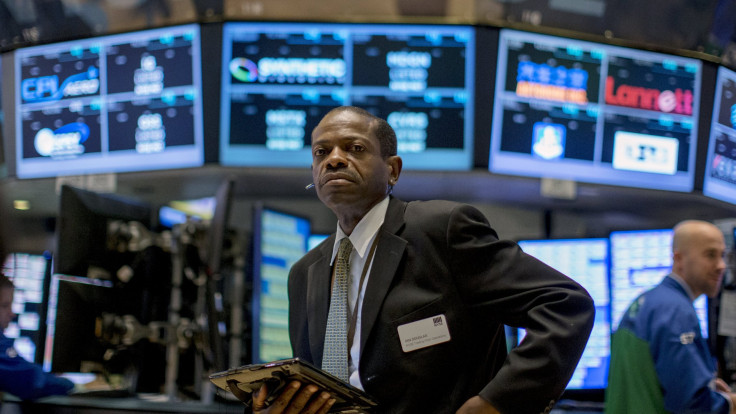Dow Jones Industrial Average Seesaws As Wall Street Kicks Off Fourth Quarter

This story was updated at 4 p.m. EDT
U.S. stocks seesawed Thursday as the final stretch of the year began with the start of the fourth quarter. After initially opening slightly higher, the Dow dropped nearly 100 points in morning trading but pared losses shortly thereafter. Then in midday trading, the blue-chip index tumbled as much as 204 points, but cut its losses in the afternoon to close down roughly 12 points.
Five of the 10 Standard & Poor's 500 sectors closed lower, led by gains in materials and healthcare stocks, while Dow component Caterpillar Inc. (NYSE:CAT) led the index lower, shedding nearly 1.5 percent.
The Dow Jones Industrial Average (INDEXDJX:.DJI) lost 12.69 points, or 0.08 percent, to 16,272.01. However, the Standard & Poor's 500 index (INDEXSP:.INX) added 3.79 points, or 0.2 percent, to 1,923.82. The Nasdaq composite (INDEXNASDAQ:.IXIC) rose 6.92 points, or 0.15 percent, to 4,627.08.
Although the Dow soared more than 200 points a day earlier, Wall Street recorded its worst quarter in four years, erasing nearly $11 trillion from the value of global shares in the third quarter, driven by fears China’s economic slowdown would spread globally.
This rally was largely unexpected considering markets remain nervous about the outlook for the fourth quarter, according to Nigel Green, founder and CEO of deVere Group.
“The U.S. corporate earnings growth cycle has begun to roll over, slower Chinese economic growth threatens to drag down demand growth across the world," Green said in a note. "No one is entirely sure when the Fed will raise rates and how the U.S. and global economies and markets will react."
The U.S. central bank left interest rates unchanged last month but left the door open to hiking rate as early as October.
The number of Americans filing new claims for unemployment benefits rose slightly last week as initial claims for state unemployment benefits went up by 10,000 to a seasonally adjusted 277,000 for the week that ended Sept. 26, the Labor Department said Thursday. Economists polled by Reuters had forecast claims rising to 270,000 last week.
The data marked the 30th straight week that claims remained below the 300,000 threshold, the longest such stretch since the 1970s. Claims below the 300,000 threshold are considered a mark of a strengthening labor market.
The economic indicator is used by economists as a pre-indicator for the U.S. labor market ahead of Friday's highly anticipated jobs report. Economists expect the U.S. nonfarm payrolls report to show that employers added 203,000 jobs in September, according to analysts polled by Thomson Reuters. The unemployment rate is forecast to remain at 5.1 percent.
Global shares traded mixed Thursday after China's mammoth manufacturing sector continued to contract in September, according to two separate reports.
The Chinese government's official gauge of factory activity recorded two straight months of decline as the manufacturing PMI rose to 49.8, up from August's three-year low of 49.7. A figure below 50 indicates contraction.
Separately, a private survey from Caixin/Markit showed China’s PMI fell to a six-and-a-half year low of 47.2, better than an earlier flash estimate of 47 but edging down from August's reading of 47.3.
Following the report, China’s benchmark Shanghai Composite index closed up 0.5 percent while Japan’s Nikkei index rose nearly 2 percent.
European stocks traded mixed, with Germany's DAX edging down 0.35 percent, while France's CAC rose 0.6 percent.
© Copyright IBTimes 2025. All rights reserved.





















